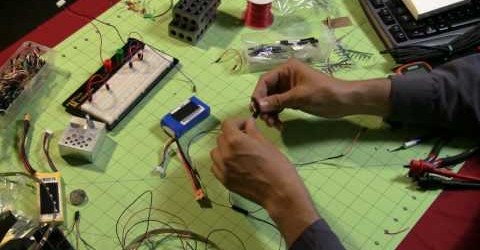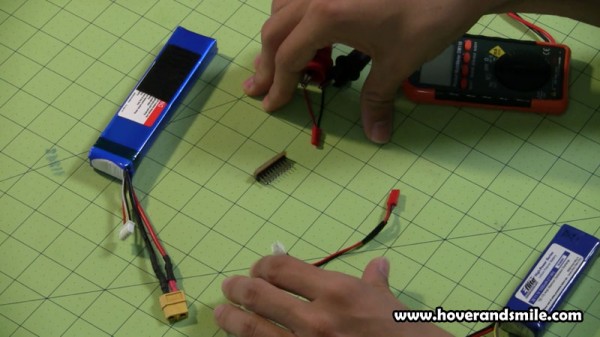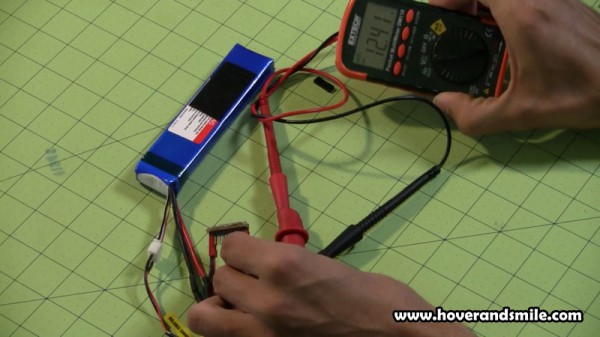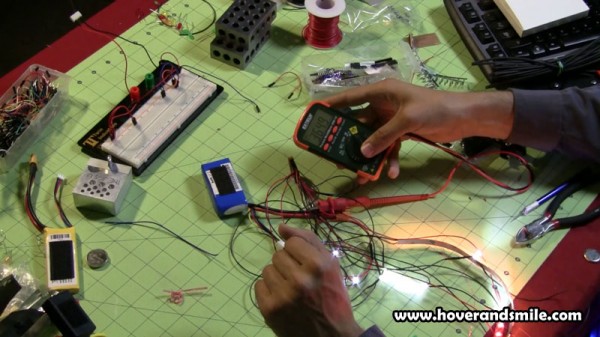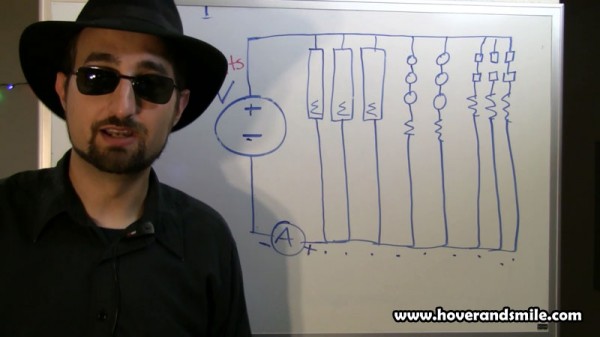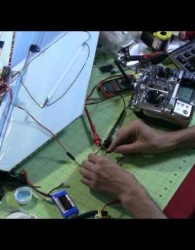Date posted: August 9, 2010
- Types of LEDS and Power Sources
- LED Characteristics and The Simple LED Circuit
- More Series LED Circuits
- Parallel LED Circuits
- LED Circuit Tools and LED Strip Kits
- Wiring Standard Bulb LEDs
- SMD LED Circuit Wiring
- LED Wiring and Current Check for Battery Power
- Placing your LED circuits on your RC Craft
- Remote Controlling your LED Circuit
- Painting With Flight
– Download LED Wiring and Current Check for Battery Power as PDF –
Let’s wire up ALL eight LED circuits we’ve made so far all together in parallel and check how much current the full circuit pulls, examine how to power the circuit, and even look at a modular ‘power bar’ to make swapping out different LEDs a snap!
So, we have 8 LED Circuits, 16 wires… 8 positive, 8 negative. How could we wire all of these together to form one big circuit, and one hook in for the battery?
Enter: The Power Bar
Well, we could just solder each positive line together, then solder each negative line together. That gives us one solder blob of positive lines and one solder blob of negative lines. Then, solder a positive wire to the positive blob, and a negative wire to the negative blob, and connect those to the battery. That would, in effect, create the circuit we’d need.
But let’s take a look at a more modular method to handling this. With some simple pin headers (or wire, if you’d like), and a cut out piece of a circuit board (available from Radio shack), we can create a modular power bar. On one end of the power bar we connect our battery, and on all the other pins we connect the LED circuits – or a voltmeter to test the voltage coming through.
Above, our simple power bar that we created by soldering one long line of pins together and the opposite line together (forming our modular solder blob of negative and positive ends). Checking it with our voltmeter and a battery connection shows the pins are working just fine:
So, if we connect simple black jumper blocks to each of the LED circuits, (they look just like servo connectors, instead of using 3 wires you’re using just 2, but you could use servo connectors if you’d like!) we have MODULAR CONNECTIVITY. Man, love that. I love modularity almost as much as I love LEDs.
Now, by breaking off one of the wires that goes to the battery (positive or negative, whichever), we can hook up an ammeter in line, and check how much current all 8LEDs are going to consume when together. You could measure each individual LEDcircuits current with the ammeter as well, then just add up all 8 results, but this is much easier.
So, we’re pulling 365-367 milliamps of power through our circuit. What’s that mean? Well, it means that based on what you’re flying – you may want to power your LEDs through their own battery, could be a lipo, 9 volt, whatever.
The Vinnie Viewpoint – Choosing your power source
Here’s Vinnie showing off the circuit no matter which way you wire it above, it’s just a big parallel circuit of righteous illumination.
Choosing between a separate battery or tapping into your flight pack’s battery depends on how much current your LEDs pull and how much capacity your flight pack battery has.
Since we have a 1300 milliamp hour (mah) battery, and we pull 360 milliamps just to light our LEDs, think about how many milliamps we’d use for LED lighting in a 5 to 10 minute flight. That will be around 1/6th or so at the most, since a maximum 10 minute flight with this battery would be 1/6th of an hour. So take your current and divide by how long you’ll fly, in our example 10 minutes (though we normally fly less in this case), and you’d get 60 milliamps.
That means our battery will only lose 60 milliamps to the LED lighting for the time we fly. That’s perfectly fine for this craft, it takes off maybe 30 seconds of flight over all. Not a big deal.
But if you’re pulling say 2-3 amps on your LED circuit (that’s two to three THOUSANDmilliamps) – You may want a separate power pack for the LEDs instead of using your flight pack.
Just have to get used to measuring current and looking at your battery capacity. To pull 2 – 3 amps worth of current, you’re looking at REALLY lighting up your whole craft most likely, and in that case, consider a separate flight pack to power your lights.
In our next section, we’ll put the lights on the craft…. We’re almost ready to paint with flight!

